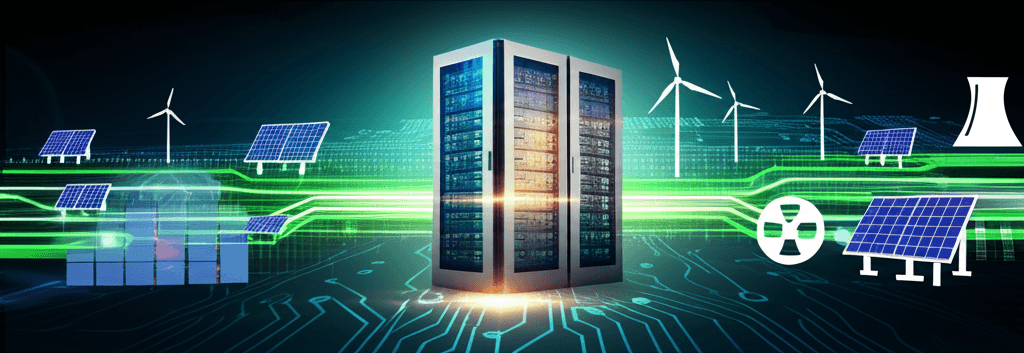AI's Energy Reckoning: Governments, Industry Partner to Power the Future
AI's voracious energy appetite is straining global grids, prompting a critical push for innovation and sustainable power solutions.
June 30, 2025

The burgeoning field of artificial intelligence is built upon a foundation of massive data centers, facilities that are increasingly straining global electricity grids with their voracious and rapidly growing appetite for power. As governments and corporations champion the transformative potential of AI, a critical question looms: can our existing energy infrastructure cope? Projections from the International Energy Agency indicate that electricity demand from data centers worldwide could more than double by 2030 to nearly 945 terawatt-hours, an amount slightly more than the current total electricity consumption of Japan.[1] This surge is primarily driven by the computational demands of training and running AI models, a reality that is forcing a power reckoning across the technology and energy sectors.[1][2]
The scale of this energy challenge is staggering. In advanced economies, data centers are projected to be responsible for over 20% of the growth in electricity demand through 2030.[1] In the United States alone, data centers are on track to account for almost half of the nation's growth in electricity demand by the same year, with their consumption potentially reaching 8% of the country's total electricity by 2030.[1][3] Some forecasts paint an even starker picture, suggesting data centers could consume as much as 20% of global electricity by 2035.[4] This dramatic increase is not just a future problem; major tech companies have already reported significant rises in their carbon footprints directly linked to expanded data center operations.[5] The physical and logistical constraints are also becoming apparent, with data center construction facing delays due to the inability of utilities to expand transmission capacity, a process hampered by permitting issues and infrastructure that is costly and slow to upgrade.[6]
Recognizing the urgent need for a strategic response, governments and industry leaders are beginning to collaborate. In the United Kingdom, for example, the government has launched an AI Energy Council, bringing together representatives from tech giants like Google, Microsoft, and Amazon Web Services with major energy providers and regulators.[7][8][9][10] The council's primary goal is to align the UK's ambitions for clean energy with the escalating power requirements of its AI infrastructure, which is slated to expand its compute capacity by at least 20 times by 2030.[7][11] This initiative aims to fast-track grid connections for new data centers and ensure they are powered sustainably, leveraging renewables, nuclear power, and advanced cooling systems.[7][8] Similar concerns are being addressed in the U.S., where the Department of Energy is actively evaluating the rising electricity demand from data centers and promoting strategies to enhance grid flexibility.[12]
The industry is not just waiting for grid-level solutions; it is actively pursuing a multi-pronged approach to mitigate AI's energy consumption. A key area of focus is hardware innovation. Companies are developing more energy-efficient AI chips, such as specialized Application-Specific Integrated Circuits (ASICs) and processors designed to reduce power consumption without significantly compromising performance.[2][13][14] Techniques like power-capping hardware have shown the potential to decrease energy use by up to 15% with minimal impact on processing times.[2] Beyond hardware, software and model optimization techniques are gaining traction.[15][16] These include model pruning, which removes unnecessary parameters to make models smaller and more efficient, and quantization, which reduces the precision of numerical values in computations to save energy.[15][13] Furthermore, AI itself is being deployed to find solutions, helping to optimize data center energy use and improve the efficiency of power grids.[2][17][18][16]
Ultimately, powering the future of AI sustainably will require a fundamental shift towards cleaner energy sources. Tech companies are among the largest corporate buyers of renewable energy, increasingly entering into power purchase agreements for solar and wind energy to run their facilities.[19][20][7] However, the intermittent nature of these sources presents a challenge for data centers that require a constant, reliable power supply.[21][20] This has led to an exploration of a diverse energy portfolio, including the integration of battery energy storage systems, the use of natural gas as a transitional fuel, and a renewed interest in nuclear power as a consistent, low-carbon energy source.[21][22] The concept of "Bring Your Own Power" (BYOP) is also gaining traction, where data center operators develop their own on-site generation, giving them greater control over their energy supply and resilience.[22] The path forward involves a complex interplay of technological innovation, strategic energy sourcing, and collaborative policymaking to ensure that the revolutionary promise of AI does not come at an unsustainable environmental cost.
Sources
[1]
[2]
[4]
[5]
[8]
[10]
[12]
[13]
[14]
[15]
[16]
[17]
[19]
[20]
[21]